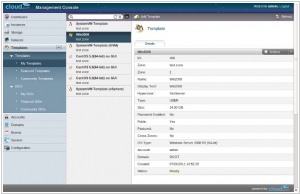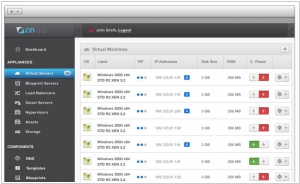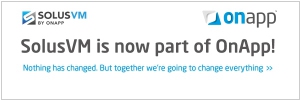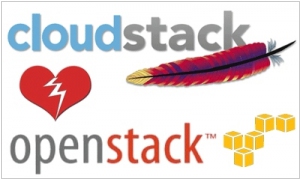CloudStack vs OnApp
May 28, 2023 | Author: Michael Stromann
8

Apache CloudStack is open source software designed to deploy and manage large networks of virtual machines, as a highly available, highly scalable Infrastructure as a Service (IaaS) cloud computing platform. CloudStack is used by a number of service providers to offer public cloud services, and by many companies to provide an on-premises (private) cloud offering, or as part of a hybrid cloud solution.
5

OnApp software enables Infrastructure-as-a-Service for hosts, telcos and other service providers. With OnApp in your datacenter you can use commodity hardware to sell public & private cloud services, dedicated servers, Virtual Private Servers, CDN, DNS, storage and much more, through one fully automated control panel.
CloudStack and OnApp are both cloud infrastructure management platforms, but they differ in their architecture, features, and target audiences. CloudStack is an open-source cloud orchestration software that provides Infrastructure-as-a-Service (IaaS) capabilities. It enables the creation and management of private, public, and hybrid cloud environments. CloudStack offers features like virtual machine management, network provisioning, storage management, and user management. It is designed to be highly scalable and customizable, making it suitable for enterprises and service providers looking for a robust and flexible cloud solution.
On the other hand, OnApp is a cloud management platform that focuses on delivering a complete end-to-end cloud infrastructure solution. It provides not only IaaS capabilities but also additional features like cloud orchestration, billing and metering, and support for virtualization technologies. OnApp is known for its intuitive user interface and ease of use, making it accessible to businesses of all sizes. It is often used by hosting providers and service providers to build and manage cloud services for their customers.
One key difference between CloudStack and OnApp is their architecture. CloudStack follows a more traditional, centralized architecture, where a central management server controls and orchestrates the cloud infrastructure. On the other hand, OnApp employs a distributed architecture, where management components are distributed across different nodes, allowing for improved scalability and fault tolerance.
See also: Top 10 Public Cloud Platforms
On the other hand, OnApp is a cloud management platform that focuses on delivering a complete end-to-end cloud infrastructure solution. It provides not only IaaS capabilities but also additional features like cloud orchestration, billing and metering, and support for virtualization technologies. OnApp is known for its intuitive user interface and ease of use, making it accessible to businesses of all sizes. It is often used by hosting providers and service providers to build and manage cloud services for their customers.
One key difference between CloudStack and OnApp is their architecture. CloudStack follows a more traditional, centralized architecture, where a central management server controls and orchestrates the cloud infrastructure. On the other hand, OnApp employs a distributed architecture, where management components are distributed across different nodes, allowing for improved scalability and fault tolerance.
See also: Top 10 Public Cloud Platforms
CloudStack vs OnApp in our news:
2014. Cloud marketplace provider OnApp buys VPS virtualization solution SolusVM

The London-based cloud automation company, OnApp, has acquired SolusVM, a virtual private server management system, with the aim of enhancing the demand for capacity within OnApp's federation. OnApp offers a marketplace that encompasses content delivery network (CDN), storage, and compute capacity. SolusVM, on the other hand, is widely used by numerous small service providers to effectively manage their virtual private servers (VPS). By incorporating SolusVM users into its ecosystem, OnApp aims to stimulate demand within its marketplace. The concept revolves around SolusVM users being presented with the option to not only add additional hypervisors but also to "simply purchase the required resources from OnApp suppliers and provide a combination of their own infrastructure and excess infrastructure to their customers."
2012. Cloud Computing benefit? Working from home in the nude

Citrix (one of the leading players on the Cloud Computing market) wondered what ordinary people think about Cloud Computing. It interviewed a thousand of ordinary Americans, and here's what they get. Only 16 percent correctly responded that Cloud Computing is a computer network to store, access and share data from Internet-connected devices. Other answers included: "An actual fluffy white Cloud", "Something related to the weather", "A pillow", "Outer space", "A movie", "A place to meet", "Toilet paper". 54 percent of respondents claim to never use Cloud Computing (although judging by the answers to other questions, 95% of them actually used). ***
2012. OpenStack launches. CloudStack departs. Amazon adapts SAP. Azure rebrands

Here is the news digest from the leading cloud platforms. First of all, the open-source platform OpenStack (aka Linux for the clouds) which had been developed for two years by the alliance of IT giants (Rackspace, NASA, Citrix, Intel, AMD, Cisco, Dell, HP, IBM ...) - finally comes to production. Since May 1, it was adapted by RackSpace for its service Rackspace Cloud Files and last week HP launched the public beta of its HP Cloud platform, based on OpenStack. However, a week before the launch the trouble (common for open-source projects) occurred with OpenStack. Citrix, which has been one of the first participants in OpenStack, suddenly decided to grant its own cloud platform - CloudStack - to Apache Software Foundation. Thus, CloudStack not flowed into OpenStack but became a rival project. Citrix explained this decision by the slow OpenStack development and unwillingness of other parties to integrate with Amazon Web Services APIs. ***
2011. Citrix acquired cloud platform Cloud.com

Virtualization and Cloud Computing have become closely intertwined technologies in recent years, with market leaders in virtualization striving to establish themselves as leading providers of cloud platforms. Microsoft introduced Windows Azure, VMWare launched vCloud, and most recently, Cloud Foundry entered the scene. Citrix, the third giant in virtualization, has now made its move into the Cloud. Until now, Citrix primarily supplied software for private clouds without its own cloud infrastructure. However, today, Citrix acquired the cloud provider Cloud.com for an estimated amount between $200 and $250 million. Cloud.com boasts an impressive client roster including Zynga, Tata, and GoDaddy. Notably, Cloud.com leverages the open-source platform OpenStack as its cloud operating system, which was developed by an alliance led by RackSpace. Citrix is also a participant in this alliance and, following the acquisition of Cloud.com, plans to continue supporting OpenStack and integrating it with its own virtualization technologies.


